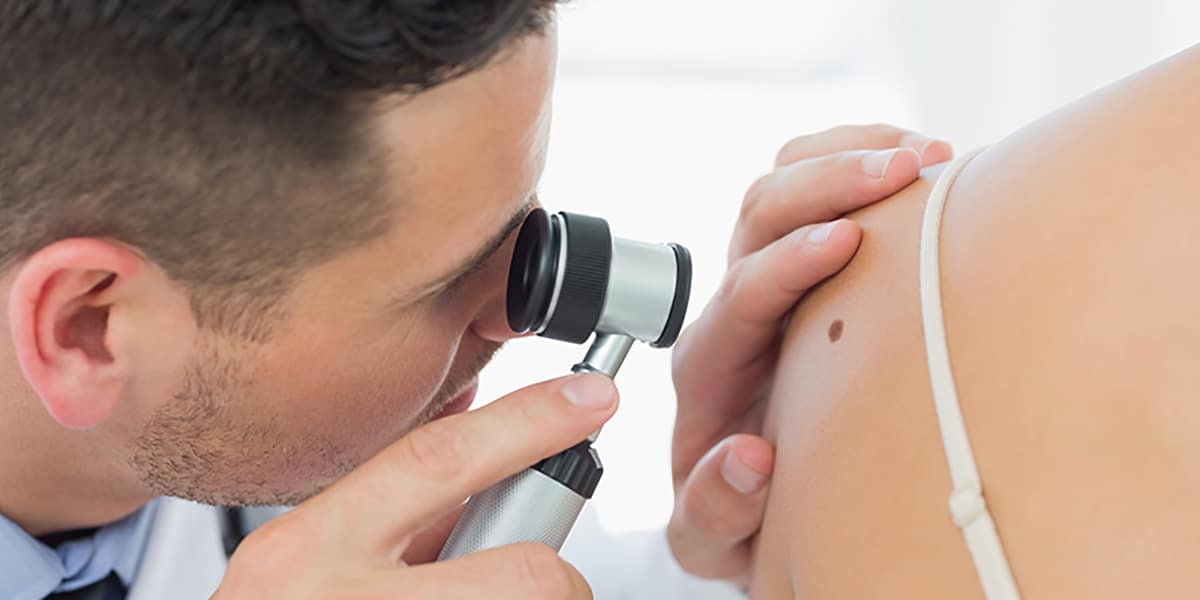Have you ever had a papercut? Most of us have. It’s no big deal – papercuts heal within a few days. This is because our skin cells are constantly being replaced. Cell growth occurs throughout our lives. Healthy cells follow a growth cycle where one cell duplicates its “insides” and then splits into two cells. If something goes wrong in this cycle, cell growth can spiral out of control. This can lead to cancer.
Cancers are named based on where they originate, and since we have different types of skin cells, there are different types of skin cancer. However, the big three (Melanoma, Basal Cell Carcinoma, and Squamous Cell Carcinoma) all have one thing in common: sun exposure is a major risk factor¹⁻³.
Individuals with skin type 1 (pale skin, light hair and eyes, burn easily in the sun and never tan) are at the highest risk of developing skin cancer. Melanoma spots are usually asymmetrical with an irregular border, and take on a colour unlike other moles on your body. They also tend to be more than a quarter inch in diameter. If you get a new mole after turning 30, keep a close eye on it, and watch for changes in your existing moles¹. Basal Cell Carcinoma usually manifests as a shiny clear or pink bump. It may resemble scar tissue and it may bleed². Squamous Cell Carcinoma usually manifests as a thick, scaly bump³. Actinic keratoses are precancerous growths⁴ that can turn into Squamous Cell Carcinoma⁵.Skin cancer can happen to anyone, even celebrities. In fact, Brooke Shields and Ewan McGregor have both openly discussed their experiences. Shields had a precancerous spot removed and McGregor had a cancerous spot removed. The two both admit to spending lots of time in the sun in their youth⁶.
Skin cancer isn’t something that should be brushed off your shoulder. Catching suspicious spots early can mean the difference between life and death. Yearly check-ups with a dermatologist can help, along with monitoring your skin at home. Most importantly, if we can prevent skin cancer from happening in the first place, why wouldn’t we? We should be adamant about using sun protection to protect ourselves from cancer-causing UV rays.
Sources:
- Wells, G. L. (n.d.). Melanoma. Retrieved July 20, 2016
- Wells, G. L. (n.d.). Basal Cell Carcinoma. Retrieved July 20, 2016
- Wells, G. L. (n.d.). Squamous Cell Carcinoma. Retrieved July 20, 2016
- MacNeal, R. J. (n.d.). Overview of Sunlight and Skin Damage. Retrieved July 20, 2016
- Skin Cancer Foundation. (n.d.). Actinic Keratosis (AK). Retrieved July 20, 2016
- Pearson, C. (2012). 10 Celebs Who’ve Been Touched By Skin Cancer. Retrieved July 25, 2016



